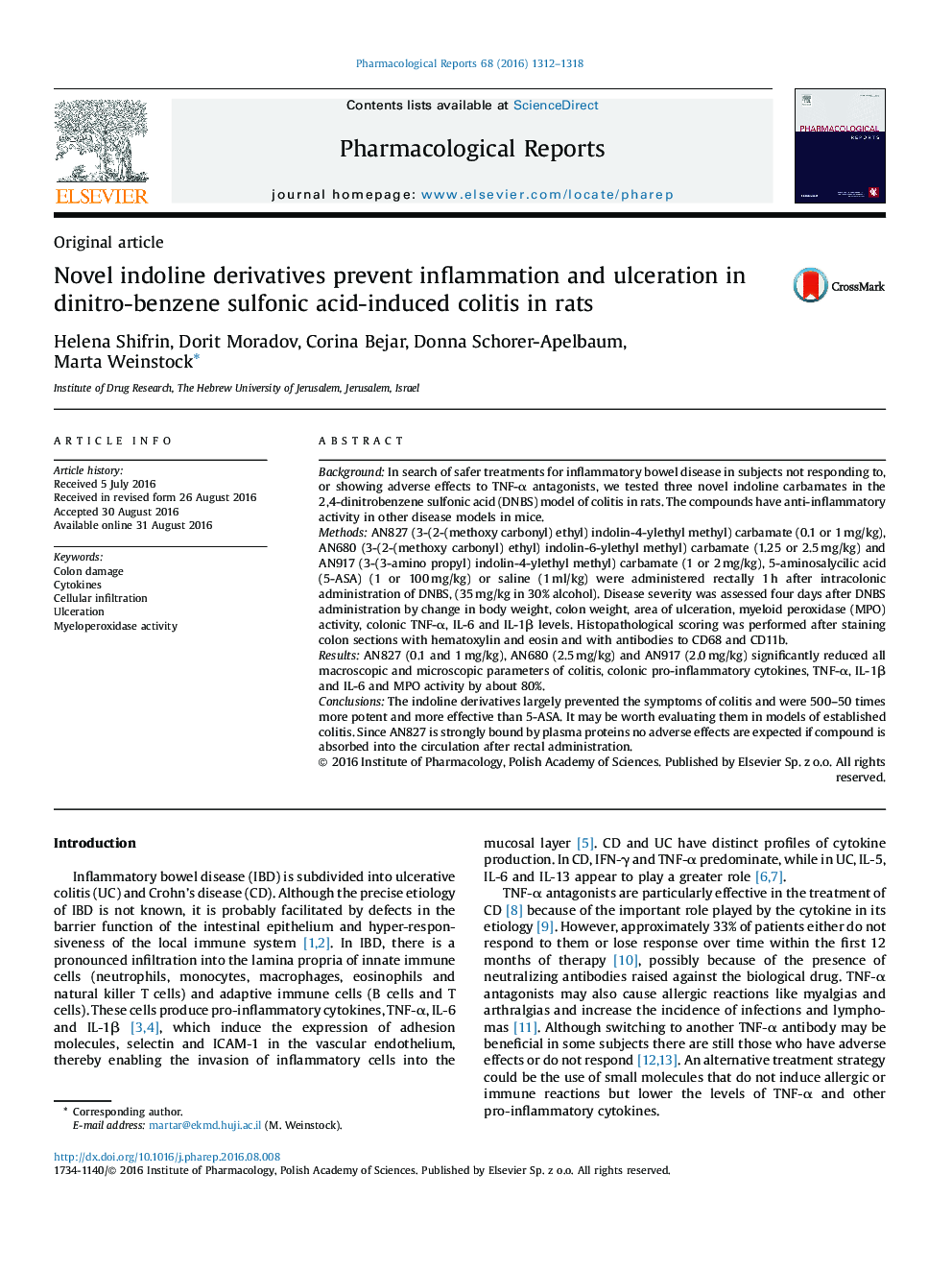| Article ID | Journal | Published Year | Pages | File Type |
|---|---|---|---|---|
| 6481729 | Pharmacological Reports | 2016 | 7 Pages |
â¢Rectal administration of 3 indoline carbamates prevents ulceration induced by DNBS.â¢The compounds prevent the 15-fold increase in myeloperoxidase activity.â¢Doses of 0.1-2.5 mg/kg markedly reduce colon levels of TNFα, IL-6 and Il-1β.â¢They normalize colon structure and reduce neutrophil and macrophage infiltration.
BackgroundIn search of safer treatments for inflammatory bowel disease in subjects not responding to, or showing adverse effects to TNF-α antagonists, we tested three novel indoline carbamates in the 2,4-dinitrobenzene sulfonic acid (DNBS) model of colitis in rats. The compounds have anti-inflammatory activity in other disease models in mice.MethodsAN827 (3-(2-(methoxy carbonyl) ethyl) indolin-4-ylethyl methyl) carbamate (0.1 or 1 mg/kg), AN680 (3-(2-(methoxy carbonyl) ethyl) indolin-6-ylethyl methyl) carbamate (1.25 or 2.5 mg/kg) and AN917 (3-(3-amino propyl) indolin-4-ylethyl methyl) carbamate (1 or 2 mg/kg), 5-aminosalycilic acid (5-ASA) (1 or 100 mg/kg) or saline (1 ml/kg) were administered rectally 1 h after intracolonic administration of DNBS, (35 mg/kg in 30% alcohol). Disease severity was assessed four days after DNBS administration by change in body weight, colon weight, area of ulceration, myeloid peroxidase (MPO) activity, colonic TNF-α, IL-6 and IL-1β levels. Histopathological scoring was performed after staining colon sections with hematoxylin and eosin and with antibodies to CD68 and CD11b.ResultsAN827 (0.1 and 1 mg/kg), AN680 (2.5 mg/kg) and AN917 (2.0 mg/kg) significantly reduced all macroscopic and microscopic parameters of colitis, colonic pro-inflammatory cytokines, TNF-α, IL-1β and IL-6 and MPO activity by about 80%.ConclusionsThe indoline derivatives largely prevented the symptoms of colitis and were 500-50 times more potent and more effective than 5-ASA. It may be worth evaluating them in models of established colitis. Since AN827 is strongly bound by plasma proteins no adverse effects are expected if compound is absorbed into the circulation after rectal administration.
